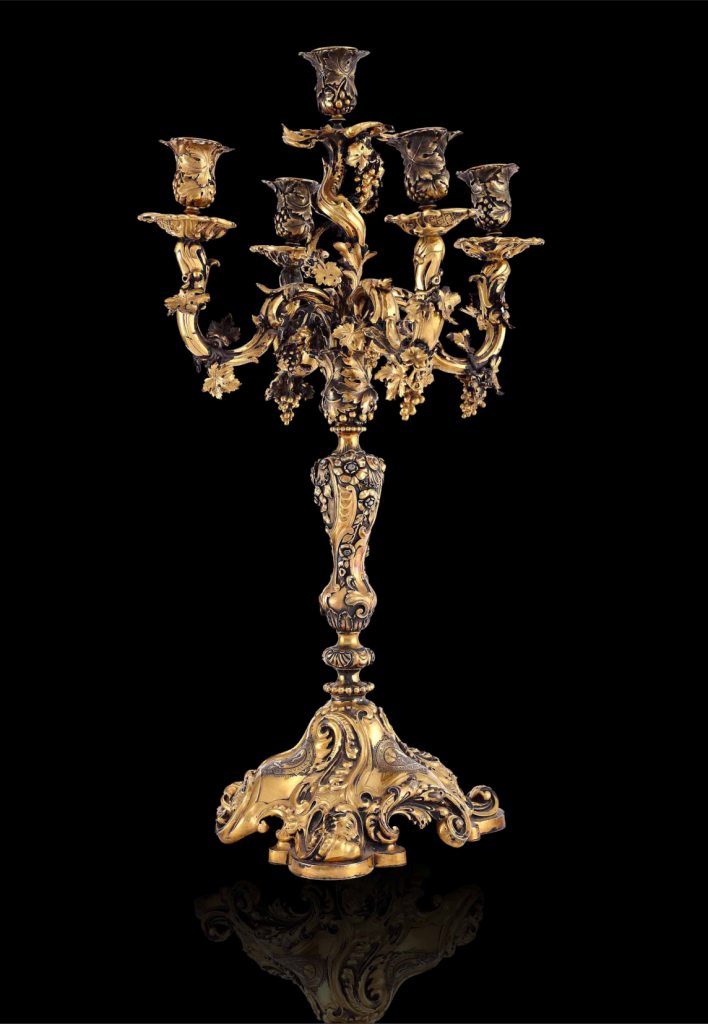![]() Silver & Metals
Silver & Metals
![]() Silver & Metals
A MAGNIFICENT VICTORIAN FIVE-LIGHT SILVER-GILT CANDELABRUM
Silver & Metals
A MAGNIFICENT VICTORIAN FIVE-LIGHT SILVER-GILT CANDELABRUM
CONTACT US
Catalogue & Viewing
Lot Closed
Accounts & Shipping
Lot Closed
-
Details
 Details
Details
A MAGNIFICENT VICTORIAN FIVE-LIGHT SILVER-GILT CANDELABRUM, by Hunt & Roskell, 1874, specially made for London & North Western Railway Company (1846-1922), on a shaped circular base, with knopped baluster stem, with foliate scroll branches and central standard with baluster sockets, circular wax pans and removable nozzles, all elaborately cast and chased overall with creepers of wine with grapes and swirling scrolls of flowers. Hallmarked with maker’s name and further marked to base ‘Hunt & Roskell Late Storr & Mortimer' and ‘6192’.
-
Literature
 Literature
Literature

The London and North Western Railway (LNWR, L&NWR) was a British railway company between 1846 and 1922. It was created by the merger of three companies – the Grand Junction Railway, the London and Birmingham Railway and the Manchester and Birmingham Railway. In the late 19th century the L&NWR was the largest joint stock company in the world. In 1923 it became a constituent of the London, Midland and Scottish (LMS) railway
Hunt & Roskell was the continuation of the well known firm of Storr & Mortimer, the business formed by Paul Storr and John Mortimer in 1822 after Paul Storr had severed his connection with Rundell, Bridge & Rundell. In 1826, Storr & Mortimer were joined in partnership by Paul Storr's nephew, John Samuel Hunt, who had worked for Storr for many years as a Chaser. Following Paul Storr's retirement in December 1838, the business was restyled Mortimer & Hunt, the partners being recorded as John Mortimer, John Samuel Hunt and his son, John Hunt.
John Mortimer retired in December 1843 and John Samuel Hunt and John Hunt entered into partnership with Robert Roskell and Charles Frederick Hancock and the business name changed to Hunt & Roskell. In January 1849 Charles Frederick Hancock left the partnership to start his own business. Hunt & Roskell was later sold to J.W. Benson in 1899 and after WWII it became part of Mappin & Webb, who in turn were acquired by Asprey & Co in 1990.
-
Condition
 Notes
Notes
 General marks, minor scratches,rubbing and wear to surface with oxidation, as visible in image.
General marks, minor scratches,rubbing and wear to surface with oxidation, as visible in image.
